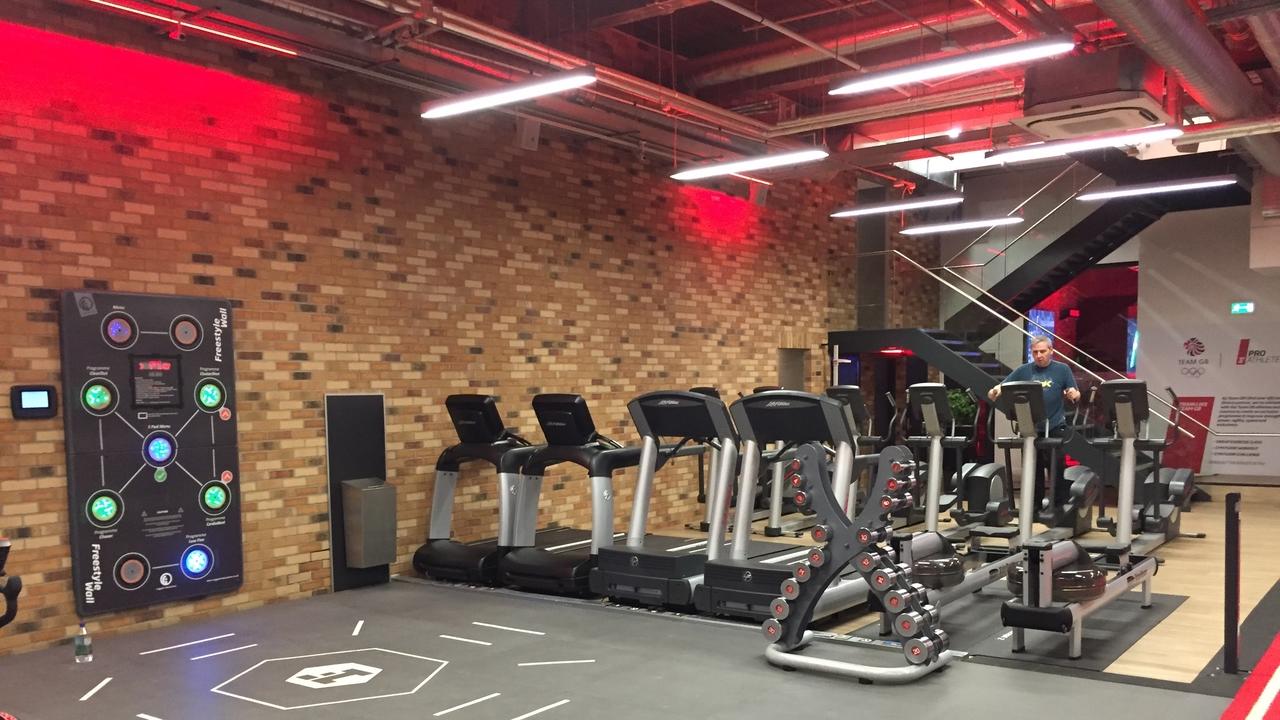Use the F word more, if you want to improve member retention

The F word here is the not the F word popularised by Gordon Ramsey and Billy Connolly and frequently used by me when I am getting frustrated. The F word we need to focus on within the health club business if we want to retain more members is frequency, as it relates to frequency of visit.
For the past few years the industry has been fixated on intensity of exercise, to help members achieve their goals. This may be due to the most commonly cited barrier to exercise being “I don’t have time”, these short but intense workouts can deliver the result but we need to be aware one of the most cited reasons for dropping out of exercise was increased intensity. In fact the research shows that as intensity goes up adherence goes down.
If we are seeking to improve the retention of our members we must understand the difference between retention, attrition and exercise adherence.
When I report on member retention I am talking about how long hey pay for, because retaining members can make or brea...
Beating the Competition

Do gym competitions or challenges improve member retention or adherence?
The thing to consider is what's motivating people to exercise. There’s often a presumption that health and fitness people are competitive, but I'm not sure that's true for everyone that goes to the gym.
Internal and External Motivation
Some people are internally motivated to train, they'll turn up every day and put a lot of effort into it. Others are more externally motivated, where they're training for other reasons than training itself. The research around internal and external motivation suggests internally motivated members are more likely to stick to exercise.
Association vs Disassociation
But does that also mean they're more likely to be competitive? A couple of other things need to be taken into consideration. The concept of association and disassociation. Some people like to disassociate when exercising. This means they use external sources to distract them from the discomfort of exercise. We commonl...
Retention 3.0
The fitness industry is in the midst of a paradigm shift. Low cost has established itself as the new large growth area, boutiques and studios are emerging as an alternative to traditional clubs and new technology platforms like Class Pass are offering the public flexible methods to consume fitness services and products.
For operators that means member retention needs to be as high a priority as new member sales.
Digital Age
Retention strategies began around 20 years ago with human-driven, staff to member initiatives based on ‘we believe this is true’ thinking. In 2002, following the release of Melvyn Hillsdon’s Winning the Retention Battle research, we began to incorporate data analysis to identify where and why the problems existed. Now, third generation retention strategies will be built on a combination of staff, mobile apps, cloud services, Big Data analytics and social technologies.
Whilst operators would clearly like to run one automated software system that does everythin...
Retention, Bad and Getting Worse
I would like to report that Health Club Member Retention is getting better, but unfortuanelty for the majority of operators it is getting worse.
The most recent research on UK health club member retention reveals a worrying decline in an already unsatisfactory situation – namely the industry’s ability to keep hold of its members.
The first study of this type was conducted as part of the FIA’s (now ukactive) Winning the Retention Battle series, conducted by Dr Melvyn Hillsdon back in 2002. At that time, a sample of just over 70,000 members revealed that 60 per cent of members retained membership for 12 months. The subsequent national study in 2008, involving 293,000 members, revealed that 66 per cent of members had retained their membership for 12 months.
But the latest figures are even worse. Based on 342,759 member records and covering the four-year period from 2009–2012, The National Retention Report (see information panel, pxx) indicates that only 52 per cent of members are ma...
Shaping Up the Figures
The real beginning of our understanding of retention and attrition started back in 2001, when the first of a series of six industry reports was produced by Dr Melvyn Hillsdon on behalf of the Fitness Industry Association. Up until that date, various figures had been published describing attrition percentages; however, these were incomparable and sometimes misleading.
Using statistical approaches common in other sectors such as healthcare, engineering and food processing, Dr Hillsdon provided the first insight into how operators were doing (reports one to three). Because of this standard approach, it was possible to compare public and private sectors, as well as large and small businesses, for the first time.
This early work employed data from 67,601 individuals, ranging from 16 to 74 years. These individuals used various fitness facilities from different sectors of the industry, including small independent operators, public sector facilities, multi-site chains and facilities within...
Why is it SO difficult to measure Retention and Attrition accurately?

Despite much talk about its importance, we still have no accepted definition or standardised measure of retention
In 2000 the FIA commissioned a research programme and a series of reports (Winning the Retention Battle) designed to provide an industry definition of retention and an industry benchmark. Whilst the reports were warmly received, individual clubs and operators have, for a variety of reasons, been unable to compare their performance with others in the industry using the new model. Melvyn Hillsdon reports.
Background
At present, most UK clubs use the following formula to calculate attrition: the number of membership cancellations per month divided by the number of sales per month. For example, if 20 members cancelled in a month and 100 joined, the attrition rate would be 20%. The 12-month attrition rate is calculated by averaging these rates over a year.
If two clubs report the same attrition rate it would seem reasonable to assume that they were performing equally. But, b...
Gym Inductions, are they worth the time and effort

A question I get frequently asked about by operators is, should we continue to provide gym inductions for our members? A number of operators have now decided that they've pretty much foregone the standard gym induction or the traditional gym induction and others are questioning the validity of that or the reason for doing that. Look, let me point out right from the start, gym inductions in the past were almost a necessity because there were so many people who'd never used a fitness club or a health club but they needed to be orientated to the equipment, they needed to be taught how to get the best out of our cardiovascular machines and our resistance machines. However, in a more maturing market, what we're seeing is lots of people have had health club memberships before, and so when they come in they may not need a standard or routine type gym induction to get them started
Is there a value in having a gym induction? Most definitely. We know that gym inductions can add up to about seve...
The Rise and Rise of Boutique clubs.

It started before Soul Cycle, an underground movement with small groups of exercise enthusiast turning up to workout together. They shared a common desire to train hard, suffer together rather than alone, motivate each other and recognise individual and group achievement. They shared a common goal. Maximize the workout and share the experience.
It began with small studios and enthusiastic instructors and then it gained momentum. The industry looked at it as a fad, something on the periphery, a small group of enthusiastic spinning participants, yoga devotees and Olympic lifters.
Then when Soul Cycle was revelaed, $112 million in anaual sales, people took notice. On the surface it looked easy to replicate. Take a small space, give it a funky appearance, coin a unique training approach and charge by the class not by the month.
Create a quality workout and user experience, make sure you can deliver it to those same high standards over and over again, price it above the norm to creat...
The other SaaS Model - Software as a Solution

The last five years has seen a proliferation of membership software systems, with cloud-based systems gaining ground. We’ve also seen an increase in software solutions such as personalised exercise data, nutritional coaching, virtual personal training platforms and staff-to-member engagement systems.
While this extra support can produce extraordinary results when implemented well, some lay dormant, costing money and producing nothing. It’s at this stage that the software is accused of not being effective, when it may well be a lack of operator focus that’s the issue.
For example, whilst CV equipment has become more sophisticated, most operators haven’t considered adapting the induction process to incorporate these advances. Apps, websites and wearables provide additional information to all parties, but also require explaining and teaching to maximise their effectiveness. It appears that very little time is given to training staff or even update training with each new iteration of th...
Enhancing Exercise Adherence

A key behaviour related to improved member retention is exercise adherence. While retention measures the time between joining and leaving, exercise adherence measures the number of session completed compared to the number of sessions a member plans to do.
If a member plans and succeeds in completing twelve training sessions per month we would report this as 100% adherence. If, however, they only completed six of the planned twelve sessions they have 50% adherence.
So we measure retention in months and adherence in sessions per month. 100% adherence is rare, unless the target frequency is so low that it’s easily achieved.
Exercise intensity is directly related exercise adherence. As intensity goes up adherence goes down. The tougher the workout the tougher we find it to maintain a regular routine. That may surprise experienced exercisers with the current fascination with HIIT. However, the more difficult an exercise programme becomes, either by intensity or complexity, the less li...




